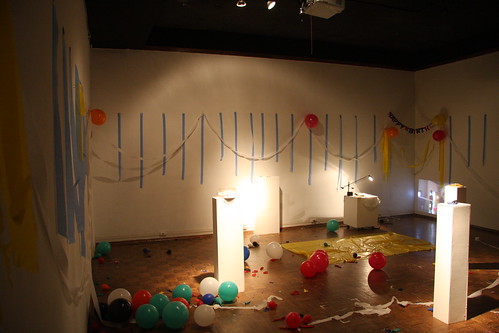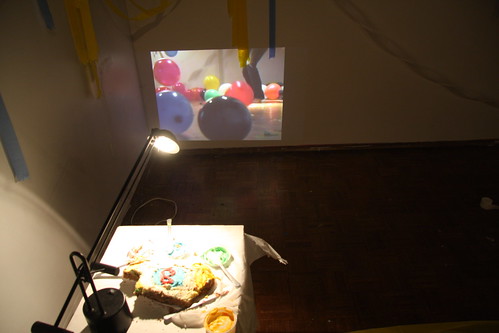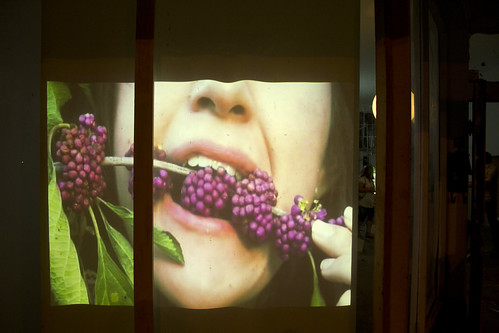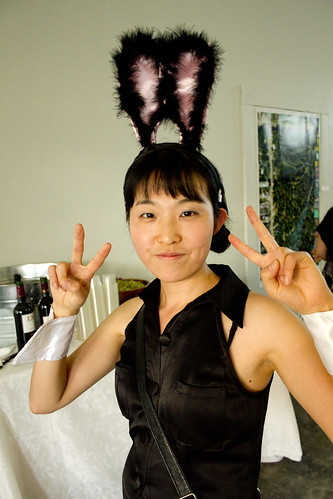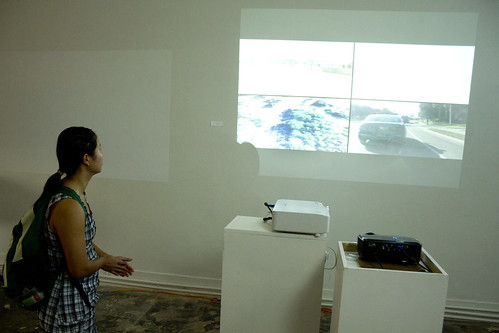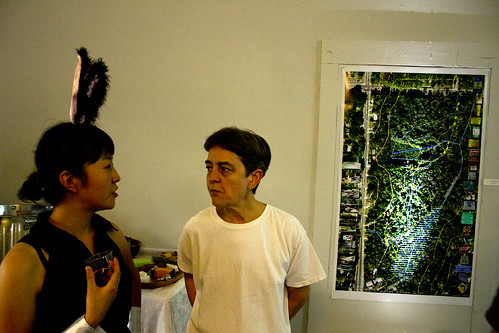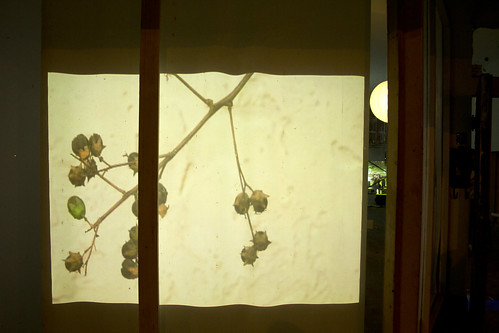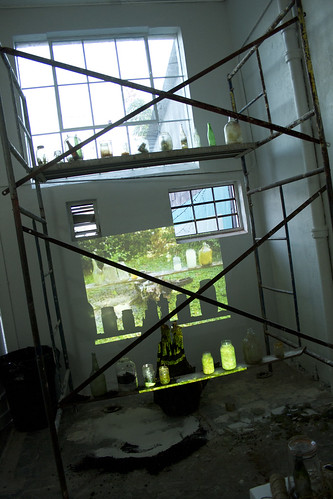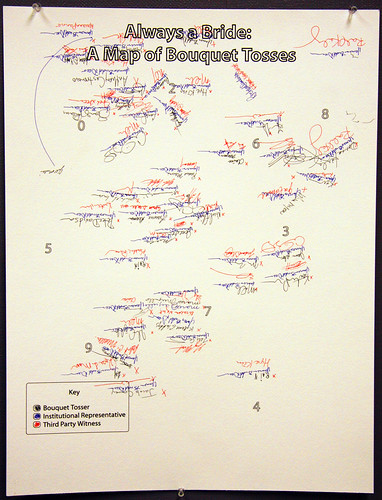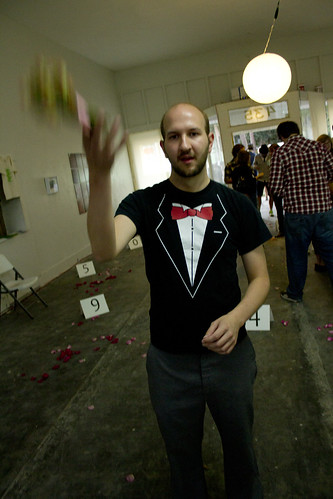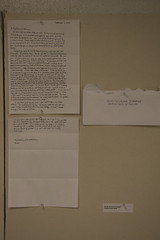Thursday, December 16, 2010
Wednesday, December 15, 2010
Monday, December 13, 2010
biking to campus
Monday, December 6, 2010
can post comments now...
orig:
I am still not able to comment on posts anymore, big drag, I'll keep trying but it's not letting me again and again.
Sunday, December 5, 2010
Metronome Baudrillard

Wednesday, December 1, 2010
Remembering the Labyrinth

After visiting the Labyrinth on Wednesday, I kept thinking that I had walked through on before in San Fransisco. I searched and found the photo! This photo is from Grace Cathedral. The labyrinth is located in the front toward the left side of the church.
The differences between the two labyrinths are every noticeable. The labyrinth in Gainesville felt "homey" to me. You could tell that it was man made and the stones where places by hand. It felt like it was one with nature and cold. Since the labyrinth was in the woods it simply had a more peaceful feel. And since the stones were raised from the ground, you really had to walk the labyrinth.
The labyrinth in SF was much different. It was made from different materials. It was not made from natural materials. It seemed to be much more elegant. And there is no boarders that made you walk the labyrinth, you should just walk straight across it.
Tuesday, November 30, 2010
Labyrinth



Last week's trip to the Labyrinth at the Unitarian church was a bit short but I think it was worth the trip. I felt however, and it seemed that most agreed, that the experience of the labyrinth itself would have been better if we had visited by ourselves. Perhaps its the context of the church but it seemed that the path that was created really wasn't meant to confuse or act as a puzzle. (You could get that from the fact that the labyrinth was just a pattern of rocks laid out on the ground) The purpose of traversing the path of the labyrinth was meditative or spiritual - it was more about the act of walking towards a singular spot than trying to figure out where you were in the puzzle. I can imagine that as one walked through the space, one's mind would begin to wander and ruminate on anything from religion or existentialism to day-to-day errands.
Critique Pictures!
Monday, November 29, 2010
can't comment
orig:
I'm having frustrating difficulties trying to comment on posts here tonight, I give up (for now).
Urban and Regional Ecologies: Notes
Urban and Regional Ecologies:
Edward Soja
The Future of Urbanism
"Shifting from the term ecologies to geographies".
ecology: the study of the relation of living organisms to each other and their surroundings.
- life processes and adaptations
- distribution and abundance of organisms
- the movement of materials and energy through living communities
Cities as socially constructed geographies/spaces...
Look at cities as 'geographies'.
Socially constructed built environments.
Interaction of scales....local to global
- body to planet
"The Spatial Turn"
- A process in which spatial thinking has been 'let loose from the disciplines of architecture, design, urban planning to everything (art, accounting, theology, law, etc.)
"Since 1971, the very nature of urbanism and urbanization itself has been experiencing a radical change."
The Metropolitan model of urbanization:
- Since the late 19th century, we've been seeing this kind of urbanization.
In the early 19th century there was a very different, centralized kind of model. No suburbs!
Metropolitan model:
- a nice core city with dynamic heterogenous populations, buzz of activity, crime, drugs, museums, everything.
- suburbia that is dull, homogenous, boring, single family houses.
- 2 worlds:
- Urbia & Suburbia
A new urbanization process is now happening:
- effecting every major metropolis in the world.
Regional Urbanization:
- producing a new kind of city.
- the era of mass suburbanization as we knew it is coming to an end.
- Suburban growth declining. The hegemony of our suburban models of city growth largely through suburbanization,
- This model of a simple division between urbia and suburbia is being changed very drastically.
Change in density gradient:
- Traditionally we have steep gradient around central city, then low density suburban sprawl.
- Now we have density gradient dropping in most places, flattening out. A filling in of the entire metropolitan region.
- It is no longer "large in center, low in periphery"
- Now, the entire area is becoming more dense...flattening out! No more gradation.
- Instead of 100 - 0, it is more like 100 - 50
- City Region: new term
- Urbanized region:
- densest city is now Los Angeles
- In 1950, it was the least dense in the US!
- Over the last 30 years, it's experienced the regional urbanization process intensely.
- New York has fallen behind because its suburbs are so sprawling and not dense.
The suburbs are becoming "outer cities"
- The suburbs are becoming urbanized!
Suburban Cities
- A paradox...contradiction in terms.
- Transformation of suburbia...no longer what it used to be.
- multiple urban centers developing.
- A network of cities
- The city region is a network of cities, multiple cities in kind of an expanded region.
- Mega-City Regions
- Megalopolitan
- Tokyo, Yokohama, 100 million people region
- Urbanized regions
- We have to plan for these regions ecologically, landscape, architecture, etc.
- Leads to a differentiation of suburbia.
- Multiple new topologies emerging in suburbia.
- used to be homogenous, now becoming highly differentiated.
- The inner city is much less predictable...
- a significant emptying out, a reduction in density in some areas.
- It's creating massive governance problems.
- The need for institutional changes to adapt to the regional urbanization process.
- Some form of regional regulation is needed...
Tuesday, November 23, 2010
Friday, November 12, 2010
LoCale Documentation
Wednesday, November 10, 2010
Microscope Movies
The first is with an electric guitar:
The second is with an acoustic guitar:
I also wanted the sound to go along with the video so I recorded the strings being plucked. There were some interesting things happening with the microscope pressed agains the strings while they buzzed. Unfortunately to match up the sound, I had to slow down the video to the point where you really loose the motion blur from the vibrating strings.
Tuesday, November 9, 2010
microscopic thoughts..
microscopic thoughts from :jorG on Vimeo.
Monday, November 8, 2010
Saturday, November 6, 2010
Microscope Fun!
Friday, November 5, 2010
Thursday, November 4, 2010
Microscope Fun
1) Find The Spider
I was recalling an old urban wise tale I had heard as a kid, that you can find a spider hidden in the dollar bill. I thought I remembered it being in the lower right corner, but a few sites on the internet said it was in the upper right corner. It was interesting to me because even after a number of design revisions since I was a child, the urban legend continues to this day, even with the newer design of the dollar bill.
2) Revisions
I'm not going to get into it in depth here, but one thing that has always bothered me about our money is the saying "in God we trust." I feel it's high time we made a revision to this wording...
3) Texture Value
This was just a fun experiment after I noticed the built in filters of the microscope helped bring out the texture of the bill.
Wednesday, November 3, 2010
Tuesday, November 2, 2010
http://www.reevesmachine.com/blog/DMA.html
Thinking about "...Heartbeats scale in the opposite directin so the bigger animals have a slower pulse. The end result is that every living creature gets about a billion heartbeats worth of life. Small animals just consume their lives faster" - The Living City by Jonah Lehrer
Friday, October 29, 2010
Tuesday, October 26, 2010
Roots Disc One Chapter Listing with Notes from Shands Visit
2. Credits- Charles
3. A Very Strong Son- security monitors
4. Kunta Kinte- METASYS
5. Partnerships- Censors "it's always multiples"
6. Much to Learn- Monitoring and Controlling Cond.
7. The Christian Thing- Reduce Energy Consumption
8. Manhood Training- Zone Monitors
9. Doing Their Jobs- UVC (kills living)
10. Types of Courage- 1956
11. Fanta and Kati- Crisis situation
12. Hunters and Their Catches- Motor Control Center
13. Bargain on the Beach- b/t a lot of electricity
14. Celebrating the New Men- Purple Room
15. Binta's Goodbye- Ready to Crawl
16. Nyo Bato's Suggestion- Red for Fire
17. Captured- restricted (fenced) by law
18. A Matter of Philosophy- "Let's Take America Back"
19. Fellow Captives- Don't touch the generator
20. Outside Her Embrace- Time Capsule 1955
21. The Ships Hold- can't take you there today
22. Taken on Deck- show us whatever you like
23. Exercise- lines on walls
24. Removing the Dead- we were in these buildings
25. The Captains Companion- Goodbye, Charles
26. One Village- 10 minute = something precious
27. End Credits- Lunch with Zach and Kenny
Shands

Friday, October 22, 2010
Critique Scehdule Thus Far
Christina
Wednesday 11/10
Kristin Reeves
Wednesday 11/17
Hye
Josh
Wednesday 11/24
Logan
Kenny
Stacey
Wednesday 12/1
Rachel
Jorge
Lu
Wednesday, October 20, 2010
food coop exhibit
Jorge working on the poster/flyer
Name of exhibit: LO-CALe, Contemplating/Experiencing/Consuming/Quantifying/Qualifying/Digesting SPACE (need to pin it down)
Zack: interactive app, joystick, monitor
Kenny: projector or series of laser cut images (hang on wall)
Logan: hang 5x7 drawing, print out, maybe bigger
Stacey: photos from hospital, needs wall space
Budd: performance
Jorge: audio in the restroom
Hye: projector, laptop, website, mouse on pedestal
Lu: projection, derive onto street window (fabric from Kristin)
Mitzi: print hang on ex-door space
Cristina: projection
Kristin: projection on same fabric as Lu perhaps, DVD player, print out maybe
Josh: projection, onto entrance floor
Tuesday, October 19, 2010
Shands
Friday, October 15, 2010
insert reality
The link above is to a short video from the tour we took of the Medical Building's basement --
I've been playing around with all the footage I took and envisioned doing a piece with all the "Air Supply" signs and the odd blue rooms that would kill our skin if the glass or the door weren't there (even looking at that video I felt a little sick knowing the harmful effects of that light/room)...The piece would have then faded into a few seconds of someone gasping for air or maybe with a big air ventilator mask on (the kind that we have to pay the university to use - go figure)
However - after looking at all of this put somewhat together I scrapped it realizing that it wasn't me...it wasn't work I would do now...So this short video above is of a single image really - an image one of us most likely created???? But maybe not... A chalk board in a remote location in one of the dusty corners of the basement with the words "I reject your reality and insert my own."
Whether it was one of our classmates or a facility worker or a random person walking the basements doesn't really matter it was here and to me it was interesting.
Wednesday, October 13, 2010
technical/cultural infrastructure






























